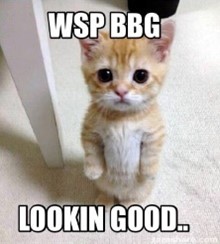Are you tired of writing out “what’s up?” in text messages? You could type the abbreviation “wsp” to ask your friend what they are up to. This post unpacks the meaning and origin of this expression.
Meaning
The abbreviation “wsp” means “what’s up.” It’s a slang greeting used by young people to ask a friend or acquaintance how they are doing.
While “what’s up” is usually a friendly greeting, it can also act as a hostile show of aggression to ward off attackers or people that threaten you.
The abbreviation “wsp” also stands for “Washington Square Park” in New York City at 4th Street and 5th Ave. It's the center of the NYU campus, and students use it as a meeting place, abbreviating the words to make communications with fellow students easier.
Example Usage
“Hey girl, wsp? How u doin? I was thinkin about u, and I thought I’d holla at u to see how u been?”
“wsp? Where have u been the last week? We haven’t seen u in ages. Ru coming back to the youth group again, or r we writing u off?”
“Hey Tina, wsp? I heard u were talking to Matty behind my back again? How many times do I have to tell u 2 back off? Leave my man alone!”
“Hey Greg, wsp? I thought u said u were coming to pick me up for a game of ball this afternoon? Where you at? It’s almost 5 pm now.”
“wsp with the way he was looking at u? That guy gives me the creeps. Let’s walk over to the group of people over there, so he doesn’t think we’re alone.”
“wsp with the way you’re avoiding me lately? Everyones saying you got some sort of beef with me? So, let’s hear it, what’s ur problem?
“Hey, wsp! The weekend was gr8. I managed to get so much stuff done around the house. I’m ready to head for work today feeling fresh as a daisy.”

Origin
The origin of the abbreviation “wsp” comes from the advent of text messaging. From the late nineties to the invention of the iPhone and Blackberry devices in 2008, phones didn’t have QWERTY keyboards. To avoid pressing a button multiple times to spell a single word, people save typing time by abbreviating common terms, like greetings.
There are dozens of examples of these abbreviations. From ROFL (rolling on the floor laughing) to “brb” (be right back), there are plenty of acronyms and abbreviations to help you save time in your text communications.
The phrase “what’s up?” has unknown origins, but language experts believe it entered mainstream use as a greeting in America in the late 1980s to early 1990s. People would use the saying to greet good friends, asking them how they are.
Phrases Similar to WSP
- What’s up?
- How’s it going?
- How are you?
Phrases Opposite to WSP
What is the Correct Saying?
Ways People May Say WSP Incorrectly
When using “wsp” in text messages, you’ll be typing it in lower-case characters—typing in upper-case means that you’re shouting at the person or being demanding with your inquiry.
Most people don’t like it when they see abbreviations in all-caps. It’s hard on the eyes and might cause them to refrain from responding to your message.
Acceptable Ways to Phrase WSP
You can use the abbreviation “wsp” when you’re asking your friend what they’re up to or when replying to them saying “hi” to you over a text message. The phrase has no application in verbal communications. You can use it in text and other text-based applications, such as forums, message boards, and social media posts.
“Wsp” is a globally-recognized text abbreviation. People in any English-speaking country will understand the meaning of the abbreviation if they see it in a message. The abbreviation is only suitable for social text messages. Don’t use it in professional communications with your boss, manager, or clients.